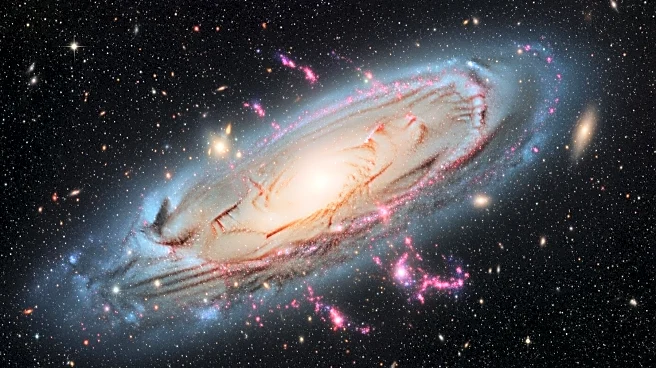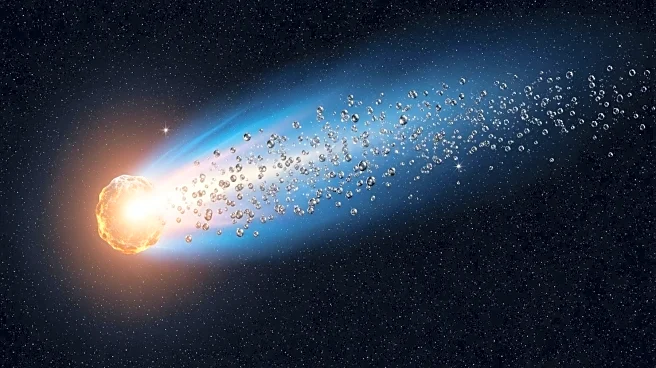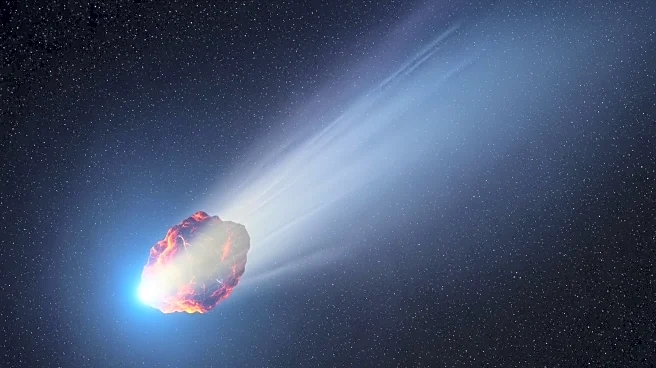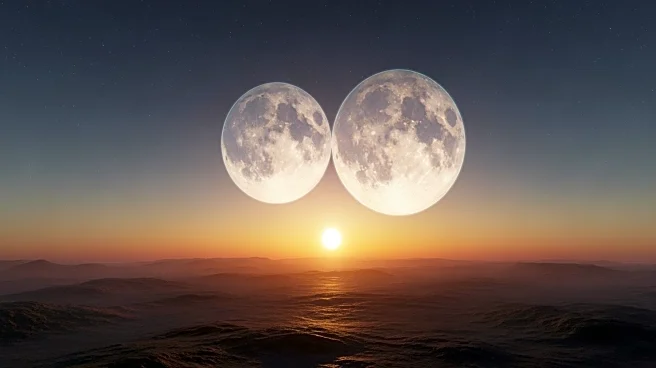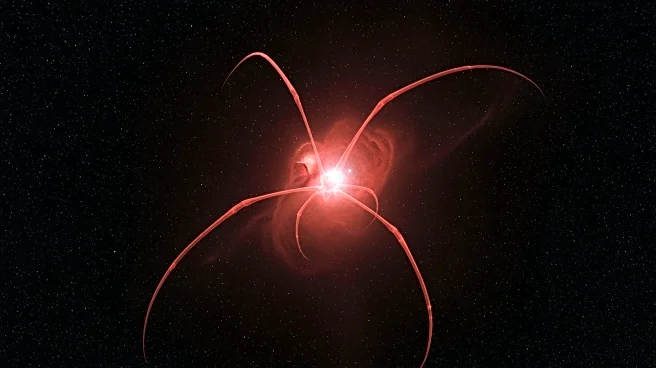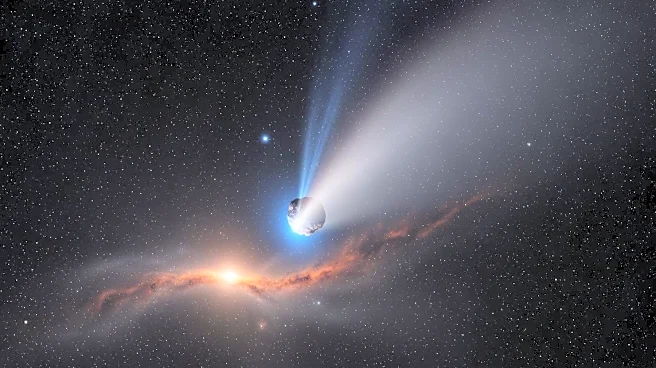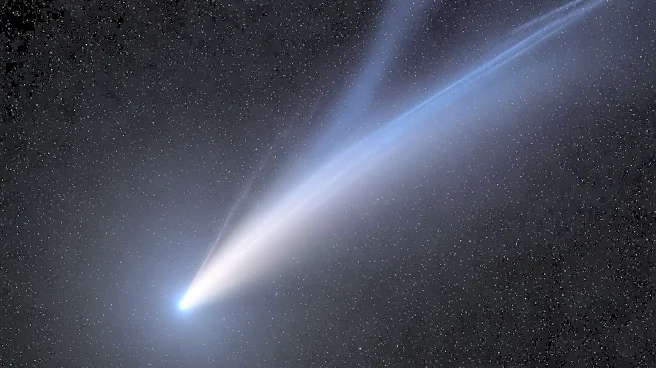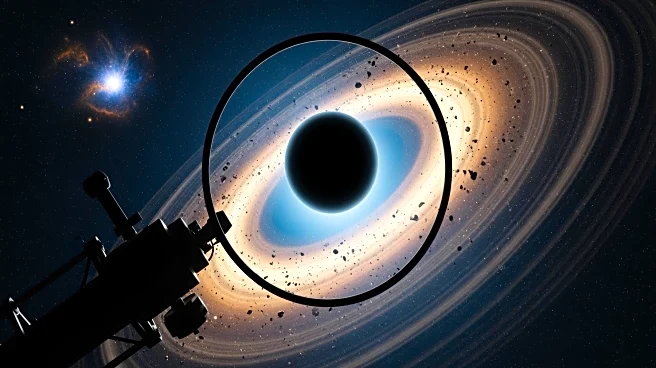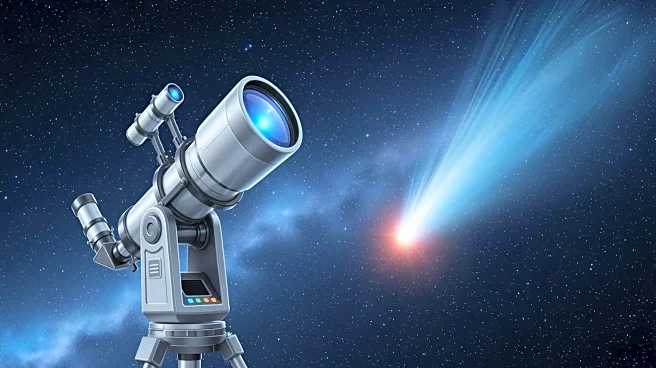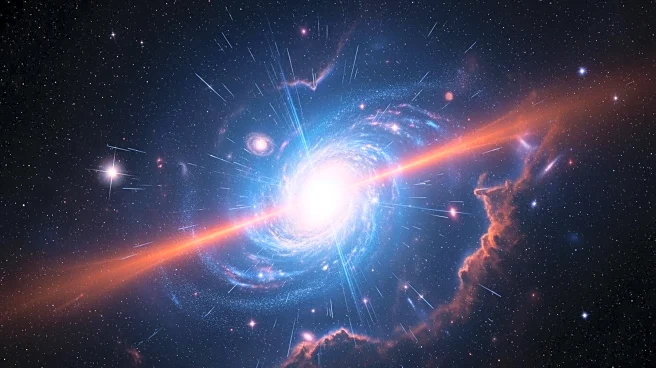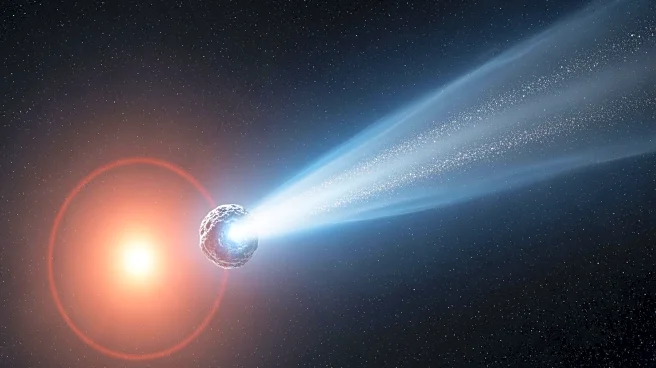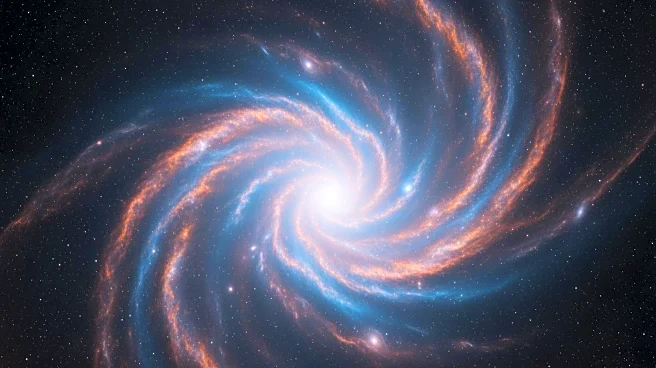What's Happening?
Astronomers using the James Webb Space Telescope (JWST) have obtained detailed observations of galaxies formed a few hundred million years after the Big Bang. These early galaxies were found to be highly unstable and turbulent, filled with clumps of gas
and stars rather than smooth, rotating disks. The study, led by researchers at the University of Cambridge, examined over 250 youthful galaxies, revealing that intense star formation and gravitational forces stirred the gas violently, preventing many galaxies from settling into steady rotation.
Why It's Important?
The findings provide crucial insights into the evolution of galaxies and the universe. Understanding the chaotic nature of early galaxies helps bridge the gap between the epoch of reionization and the cosmic noon, when star formation peaked. This research challenges previous models that suggested the early formation of massive, well-ordered disks, offering a more accurate picture of galaxy dynamics. The study contributes to our understanding of how galaxies like the Milky Way formed and evolved over time.
What's Next?
Future research will combine these findings with observations of cold gas and dust to create a more complete understanding of galaxy formation. The JWST will continue to provide unprecedented detail on galaxy dynamics, allowing astronomers to track how these turbulent systems evolved into the stable structures seen today. The study highlights the importance of international collaboration in advancing our knowledge of the universe's history and the processes that shaped it.
Beyond the Headlines
The research underscores the significance of technological advancements in astronomy, such as the JWST, in uncovering the mysteries of the universe. The study's findings challenge existing theories and provide a new perspective on the formation and evolution of galaxies. The collaboration between NASA, ESA, and the Canadian Space Agency exemplifies the global effort to explore and understand the cosmos.
